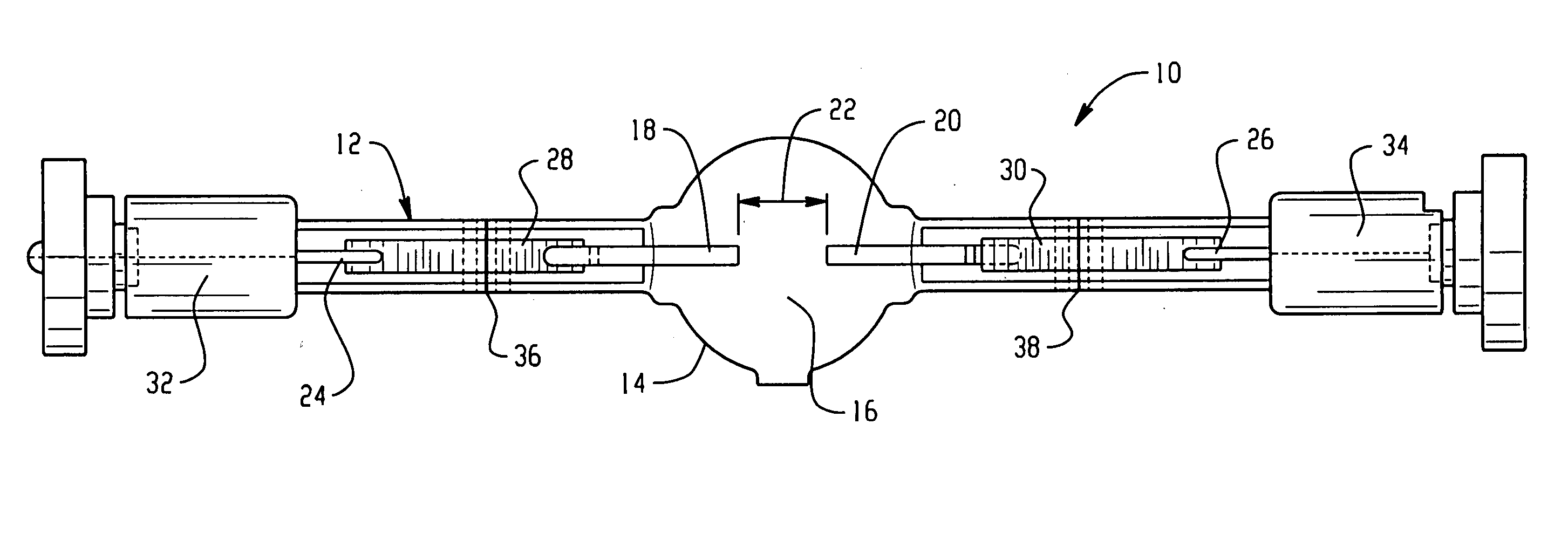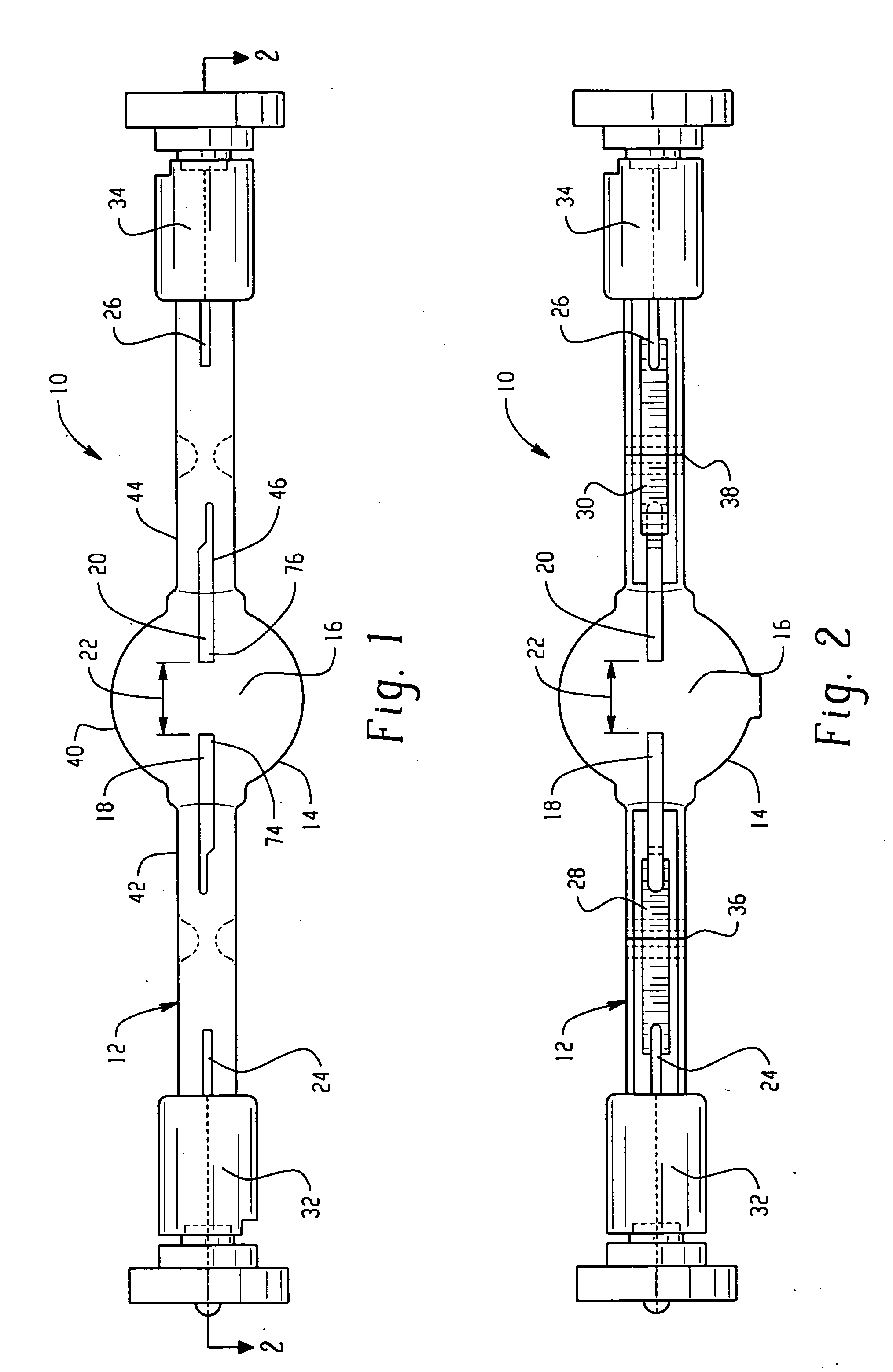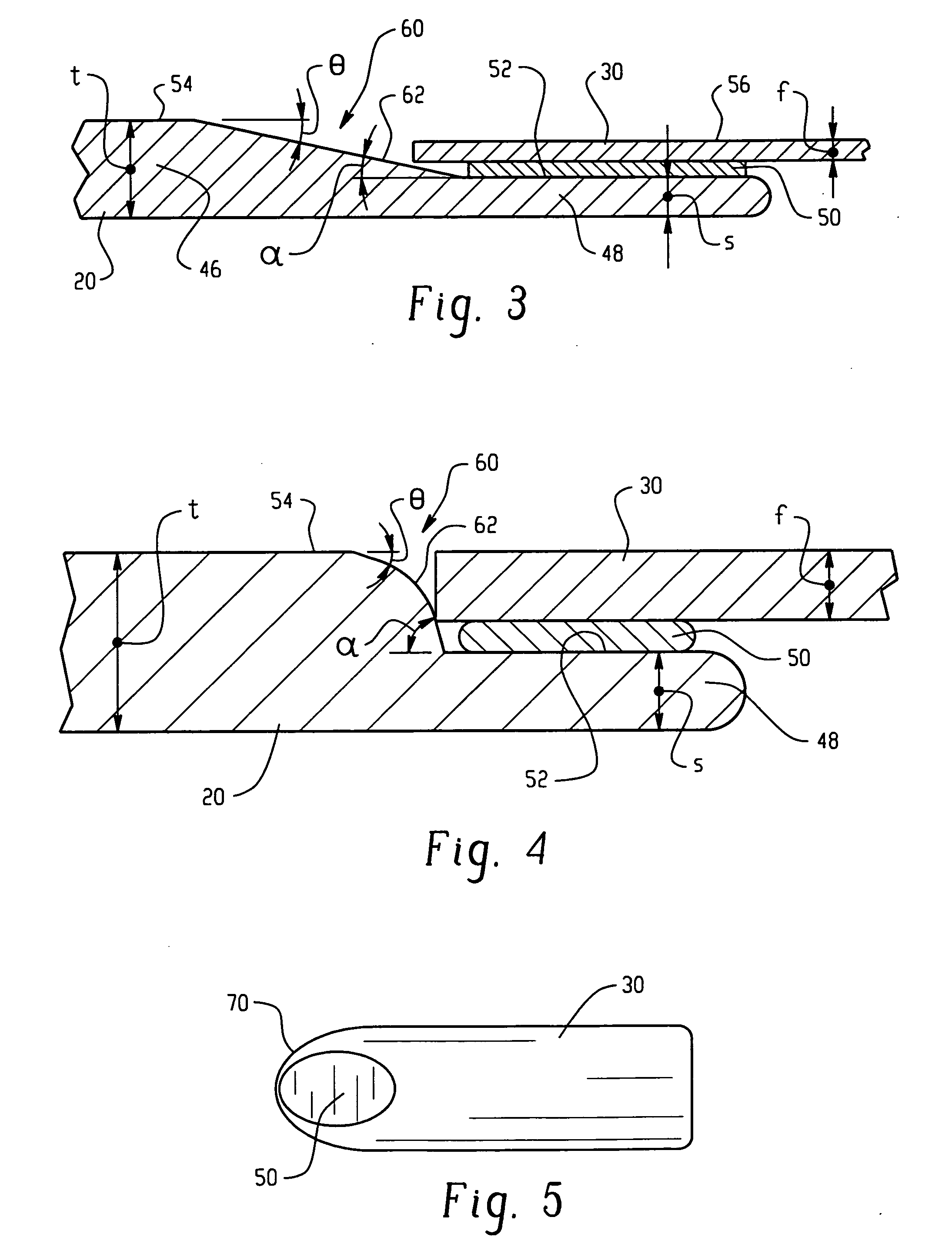Electrode-foil interface structure
a technology of electrodes and foils, applied in the manufacture of electrode systems, cold cathode manufacturing, electric discharge tubes/lamps, etc., can solve the problems of foil overheating in the foil area, lamp failure risk in the region, and the tendency of failure to occur in the sealing region, so as to reduce the thickness and reduce the thickness
- Summary
- Abstract
- Description
- Claims
- Application Information
AI Technical Summary
Benefits of technology
Problems solved by technology
Method used
Image
Examples
Embodiment Construction
[0012] Aspects of the exemplary embodiment relate to systems and methods for reducing the failure of lamps due to lamp stem rupture. It is now proposed that one of the failure modes in the region of the pinch seal is due to stress risers. In a conventional molybdenum foil interface, the electrode and outer connector, which are electrically connected by the foil, are substantially thicker than the foil. It is proposed that the sharp corners created at the foil interface place stresses on the vitreous material in the region of the pinch seal and contribute to lamp failure. In the exemplary embodiment, a foil interface structure is designed to reduce these stress risers and thereby provide a lamp which is less prone to failure. As a result, the life of hermetic seals around the molybdenum foil and electric lamps employing such seals can be increased.
[0013] In various aspects, the interface is formed between an electrically conductive foil connector, such as a molybdenum-containing foi...
PUM
 Login to View More
Login to View More Abstract
Description
Claims
Application Information
 Login to View More
Login to View More - R&D
- Intellectual Property
- Life Sciences
- Materials
- Tech Scout
- Unparalleled Data Quality
- Higher Quality Content
- 60% Fewer Hallucinations
Browse by: Latest US Patents, China's latest patents, Technical Efficacy Thesaurus, Application Domain, Technology Topic, Popular Technical Reports.
© 2025 PatSnap. All rights reserved.Legal|Privacy policy|Modern Slavery Act Transparency Statement|Sitemap|About US| Contact US: help@patsnap.com



